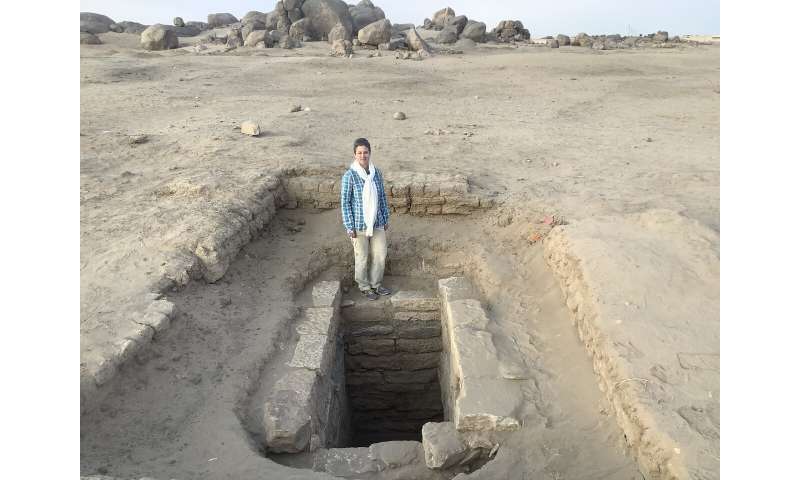Archaeologist sinks teeth into understanding cultural identity, interactions in ancient Nile River V
Archaeologist sinks teeth into understanding cultural identity, interactions in ancient Nile River Valley
JUNE 10, 2020
by Madison Sanneman, Purdue University

Michele Buzon, professor of anthropology at Purdue University, is a bioarchaeologist who has excavated in the Nubian region of modern-day Sudan, to better understand interactions between Egyptians and Nubians. She and her research team excavated the site of Tombos in northern Sudan in January and February. This was her 10th field season at the site. Credit: Michele Buzon
Like a fingerprint, teeth are unique to each individual. Dental records are useful in identifying human remains, but what can tooth enamel tell us about an individual—or an entire civilization—of 3,000 years ago in the Nile River Valley?
"One way we can identity whether an individual is from a particular area is from elements that are in the ground; plants and animals that we consume are incorporated into our skeletal and dental tissues," said Michele Buzon, professor of anthropology at Purdue University.
Buzon is a bioarchaeologist who has excavated in the Nubian region of modern-day Sudan, to better understand interactions between Egyptians and Nubians.
"I have been using the element strontium in tooth enamel in order to see if the individuals buried at the sites I am excavating were born and raised in the local area or if they are immigrants that were raised somewhere else," she said.
More:
https://phys.org/news/2020-06-archaeologist-teeth-cultural-identity-interactions.html
